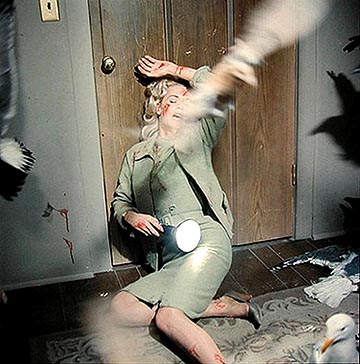“Space is like an opaque medium that Hitchcock knows how to carve, trim and slice as if it were a side of beef.”
This is from Paglia's book-length essay on The Birds
— and what she says of Hitchcock is true of all the great directors,
who carve up and reshape space before our eyes, drawing us ever deeper into the
spatial illusion of the cinematic image, the core of its sensual appeal and the
primary medium of its emotional expressiveness. This malleability
of space, its ability to be carved and reshaped in cinema, is what places cinema squarely among the plastic arts.
It's a hard concept to grasp, which is why film is traditionally
analyzed in terminology derived from the visual arts, like painting, or
the literary arts, like theater and the novel, even though its most
powerful effects more closely resemble those of sculpture, architecture
and dance. Albert Einstein said, “Space is not merely a
background for events, but possesses an autonomous structure.”
Film does not simply create occasions for visual or literary events — it investigates the structure
of space, associates the structure of space with the structure of
dreams. Orson Welles said that on some level every great film is a chase — which is
just another way of saying that on some level every great film is about space.

[Paglia's short book on The Birds,
published as part of the BFI Film Classics series, doesn't, to me, get
at the heart of the film's themes, but it's an exhilarating
intellectual tour de force
with a dazzling range of allusions to other works of art and to the
cultural matrix from which the film emerged. It's an
indispensable text.]
